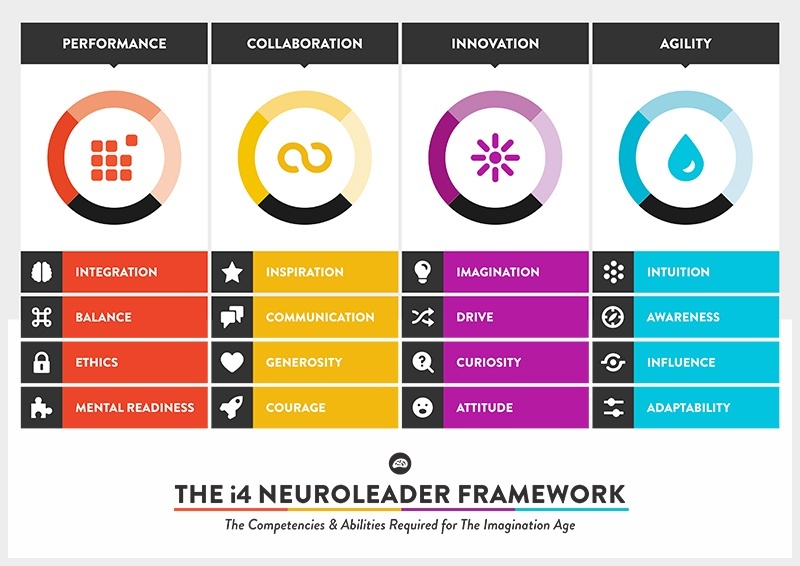An African Adventure Can Turn Your Communication Upside Down
When you think of the word communicate, you probably imagine speaking words or reading something. But communication is more than just words. It is the look in someone's eyes or the quiet shrug of the shoulders. Being an effective communicator doesn't only entail sharing words, it is about sharing emotion and ideas, and being able to truly listen to others.
A story from the sixties has been making rounds on the Internet again. A nine-year-old American boy visited the Masai in Kenya. He did not speak the language, and the village children did not speak English.
A photographer clearly showed that communication was no issue, however. The kids traded knowledge creatively, without requiring words or written text. The chieftain's son taught the American child how to shoot a bow and arrow and throw a spear. In return, the American boy taught the village children how to play baseball.
The American boy learned to track and stalk animals and how to hunt. He was eventually adopted as a blood brother to the chieftain's son. He had an incredible adventure, most of it without the benefit of language.
This type of scenario is not uncommon with children. Watch them at an airport the next time you travel or spend some time relaxing in a park where kids are playing. Even babies who cannot speak can clearly communicate their needs.
Increase The Likelihood Of Others Hearing What You Say
Communication is the oxygen or the life-blood of collaboration. When people are connected with a shared purpose and they can communicate why that purpose matters, a team can coalesce and move more rapidly to greater heights.
But this kind of collaboration cannot happen unless people can share and connect with others through effective, purpose-driven communication. To increase your communication skills, first stop your inner dialogue.
Give others around you a chance to speak and try not to interrupt. Remember the example of children, and don't limit yourself to just language. Observe people and attempt to understand their emotions and motivations, not just what they say.
The art of effective listening is essential to clear communication, and clear communication is necessary to management success.
James Cash Penney
How Communication Relates To Collaboration
Communication is one of the 4 pillars under the competency of Collaboration in the  . A clear articulation of what is being said, in conjunction with the ability to listen to others are the foundational steps for connecting and engaging effectively.
. A clear articulation of what is being said, in conjunction with the ability to listen to others are the foundational steps for connecting and engaging effectively.
The i4 Neuroleader Program will teach you how to enhance your communication abilities by training your brain to stay in the present, particularly when collaborating with others.
5 Tips For Communication
- Stop your inner monologue
- Learn to chunk down
- Stop interrupting and be patient
- Attend a silent retreat
- Study micro-expressions
Most of us will never experience the adventure that one little American boy was fortunate enough to have. While your communication skills may not be tested in the same ways, you can become a more effective leader if you learn how to listen to others. Sharing ideas and emotions doesn't always require words, but an open mind.
- i4 Neuroleader (353)
- Leadership & Culture (328)
- Brain Health & Wellbeing (202)
- Innovation (97)
- Performance (85)
- Our News (79)
- Collaboration (68)
- Agility (53)
- Practitioner Stories (44)
- In The Press (36)
- Make Me A Leader (33)
- Balance (31)
- Integration (30)
- Imagination (29)
- Awareness (23)
- Brain-Friendly Channel (22)
- Communication (22)
- Curiosity (21)
- Inspiration (19)
- Intuition (19)
- Attitude (17)
- Courage (16)
- Adaptability (14)
- Case Studies (14)
- Drive (14)
- Brain-Friendly Leadership (13)
- Generosity (13)
- Ethics (9)
- Mental Readiness (9)
- Influence (8)
- Retreat (6)
- Brain-Friendly Leadership (1)
- Oracle Cards (1)
- 1 July 2025 (1)
- 1 June 2025 (2)
- 1 April 2025 (1)
- 1 March 2025 (8)
- 1 February 2025 (3)
- 1 September 2024 (4)
- 1 July 2024 (2)
- 1 June 2024 (6)
- 1 May 2024 (2)
- 1 April 2024 (3)
- 1 March 2024 (1)
- 1 November 2023 (1)
- 1 August 2023 (1)
- 1 July 2023 (2)
- 1 June 2023 (2)
- 1 May 2023 (4)
- 1 April 2023 (2)
- 1 March 2023 (7)
- 1 February 2023 (4)
- 1 January 2023 (1)
- 1 September 2022 (1)
- 1 May 2022 (3)
- 1 April 2022 (1)
- 1 March 2022 (5)
- 1 February 2022 (4)
- 1 January 2022 (4)
- 1 December 2021 (2)
- 1 November 2021 (4)
- 1 October 2021 (3)
- 1 September 2021 (6)
- 1 August 2021 (1)
- 1 April 2021 (1)
- 1 December 2020 (2)
- 1 November 2020 (1)
- 1 September 2020 (1)
- 1 August 2020 (1)
- 1 July 2020 (3)
- 1 June 2020 (4)
- 1 May 2020 (3)
- 1 April 2020 (4)
- 1 March 2020 (6)
- 1 February 2020 (4)
- 1 January 2020 (2)
- 1 December 2019 (3)
- 1 November 2019 (3)
- 1 October 2019 (5)
- 1 September 2019 (4)
- 1 August 2019 (4)
- 1 July 2019 (4)
- 1 June 2019 (5)
- 1 May 2019 (9)
- 1 April 2019 (9)
- 1 March 2019 (8)
- 1 February 2019 (7)
- 1 January 2019 (8)
- 1 December 2018 (5)
- 1 November 2018 (10)
- 1 October 2018 (16)
- 1 September 2018 (9)
- 1 August 2018 (10)
- 1 July 2018 (9)
- 1 June 2018 (8)
- 1 May 2018 (9)
- 1 April 2018 (9)
- 1 March 2018 (9)
- 1 February 2018 (8)
- 1 January 2018 (8)
- 1 December 2017 (6)
- 1 November 2017 (9)
- 1 October 2017 (9)
- 1 September 2017 (8)
- 1 August 2017 (10)
- 1 July 2017 (8)
- 1 June 2017 (8)
- 1 May 2017 (9)
- 1 April 2017 (8)
- 1 March 2017 (6)
- 1 January 2017 (3)
- 1 December 2016 (4)
- 1 November 2016 (5)
- 1 October 2016 (4)
- 1 September 2016 (2)
- 1 August 2016 (4)
- 1 July 2016 (4)
- 1 June 2016 (2)
- 1 May 2016 (3)
- 1 April 2016 (3)
- 1 March 2016 (7)
- 1 February 2016 (2)
- 1 January 2016 (5)
- 1 December 2015 (2)
- 1 November 2015 (2)
- 1 October 2015 (4)
- 1 September 2015 (2)
- 1 August 2015 (2)
- 1 July 2015 (1)
- 1 June 2015 (3)
- 1 May 2015 (4)
- 1 April 2015 (5)
- 1 March 2015 (3)
- 1 February 2015 (3)
- 1 January 2015 (3)
- 1 December 2014 (3)
- 1 November 2014 (3)
- 1 October 2014 (3)
- 1 September 2014 (5)
- 1 August 2014 (4)
- 1 July 2014 (5)
- 1 June 2014 (3)
- 1 May 2014 (1)
- 1 March 2014 (1)
- 1 December 2013 (2)
- 1 November 2013 (1)
- 1 July 2013 (1)
- 1 June 2013 (1)
- 1 May 2013 (3)
- 1 April 2013 (1)
- 1 March 2013 (2)
- 1 February 2013 (1)
- 1 January 2013 (2)
- 1 November 2012 (1)
- 1 October 2012 (1)
- 1 September 2012 (1)
- 1 August 2012 (2)
- 1 July 2012 (1)
- 1 June 2012 (1)
- 1 May 2012 (2)
- 1 April 2012 (1)
- 1 February 2012 (1)
- 1 January 2012 (1)
- 1 November 2011 (1)
- 1 October 2011 (3)
- 1 September 2011 (2)
- 1 July 2011 (1)
- 1 June 2011 (1)
- 1 May 2011 (1)
- 1 April 2011 (1)
- 1 March 2011 (1)
- 1 February 2011 (2)
- 1 January 2011 (4)
- 1 December 2010 (4)
- 1 November 2010 (3)
- 1 October 2010 (5)
- 1 September 2010 (4)
- 1 August 2010 (4)
- 1 July 2010 (3)
- 1 June 2010 (4)
- 1 May 2010 (7)
- 1 April 2010 (5)
Subscribe by email
You May Also Like
These Related Stories

Adaptability Is More Than Just Change

From The Hospital On Election Day




No Comments Yet
Let us know what you think